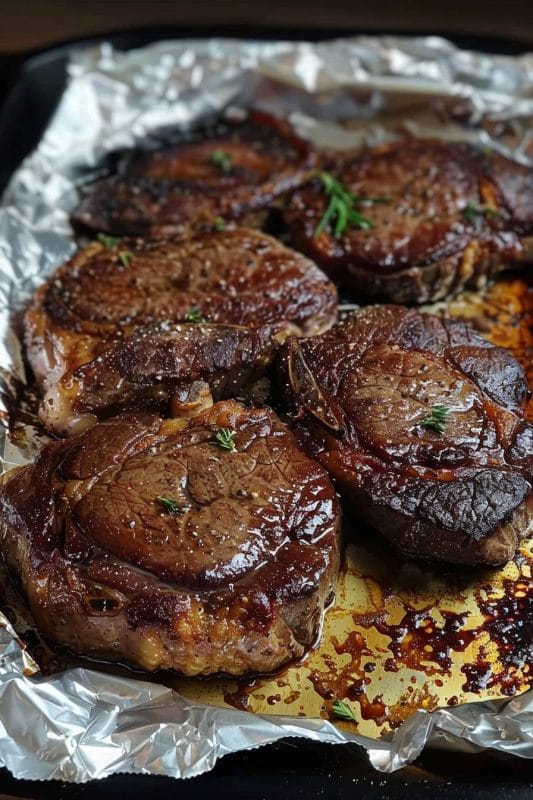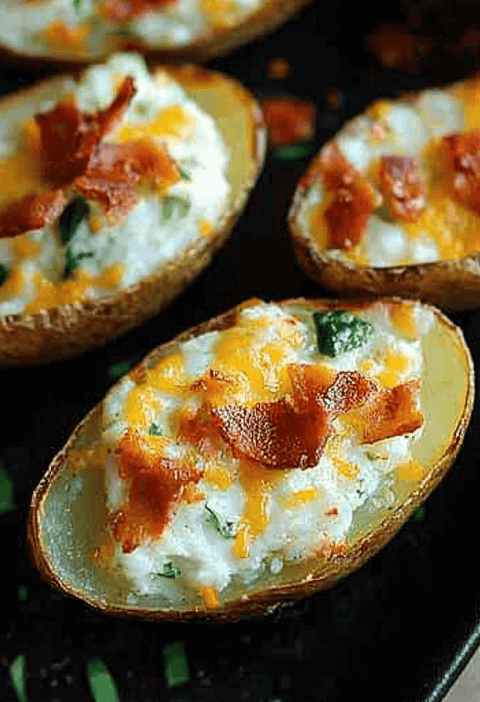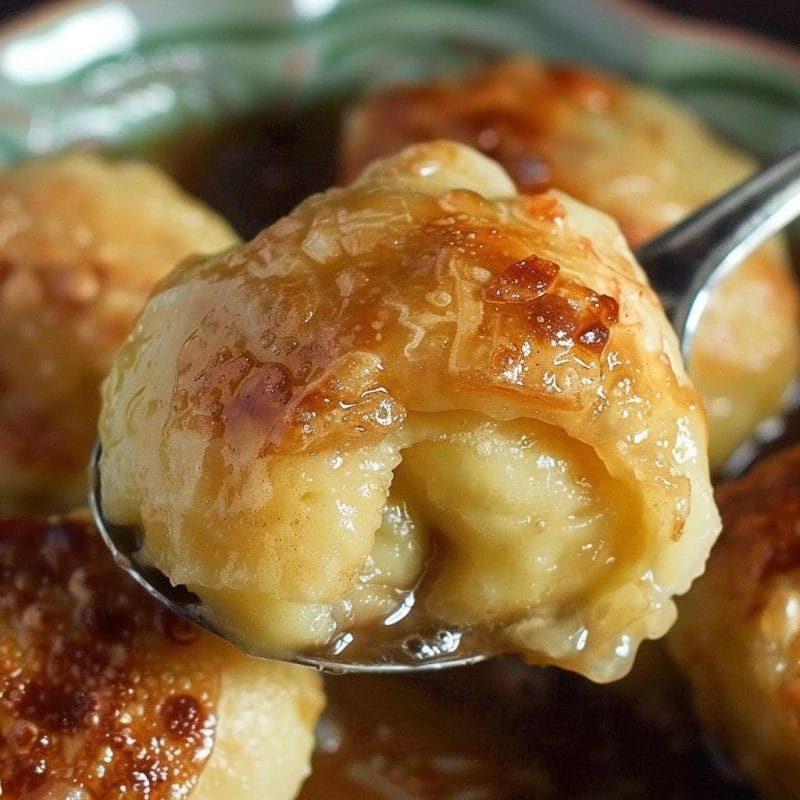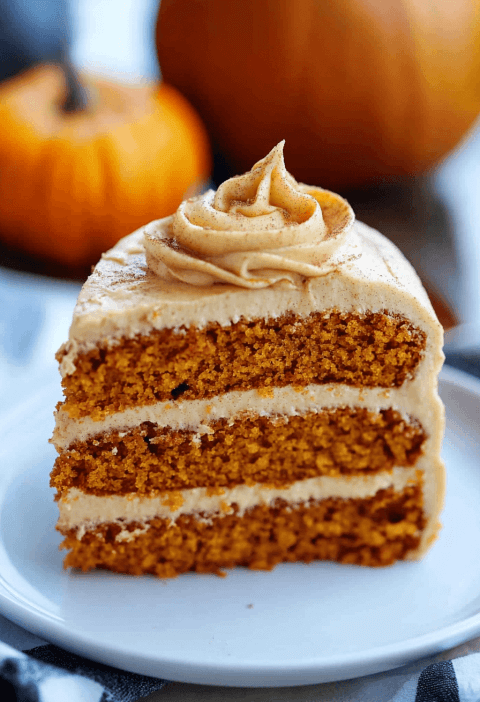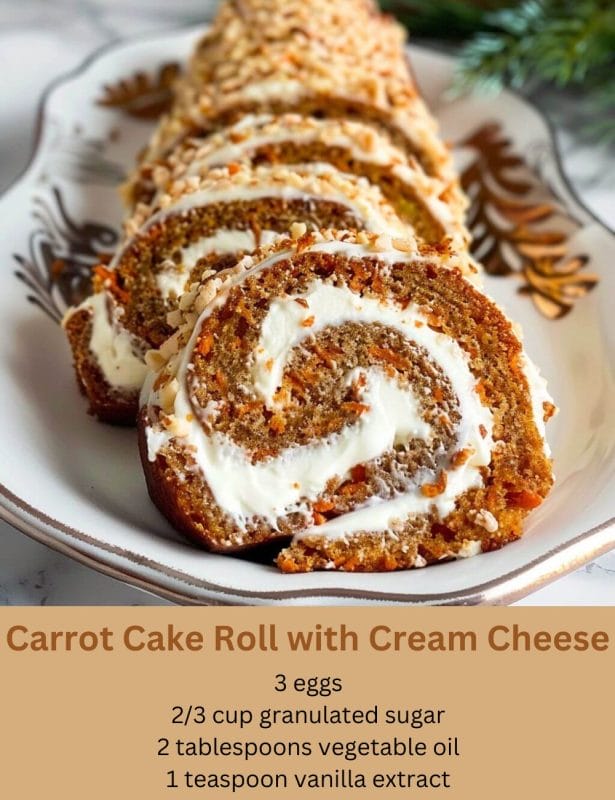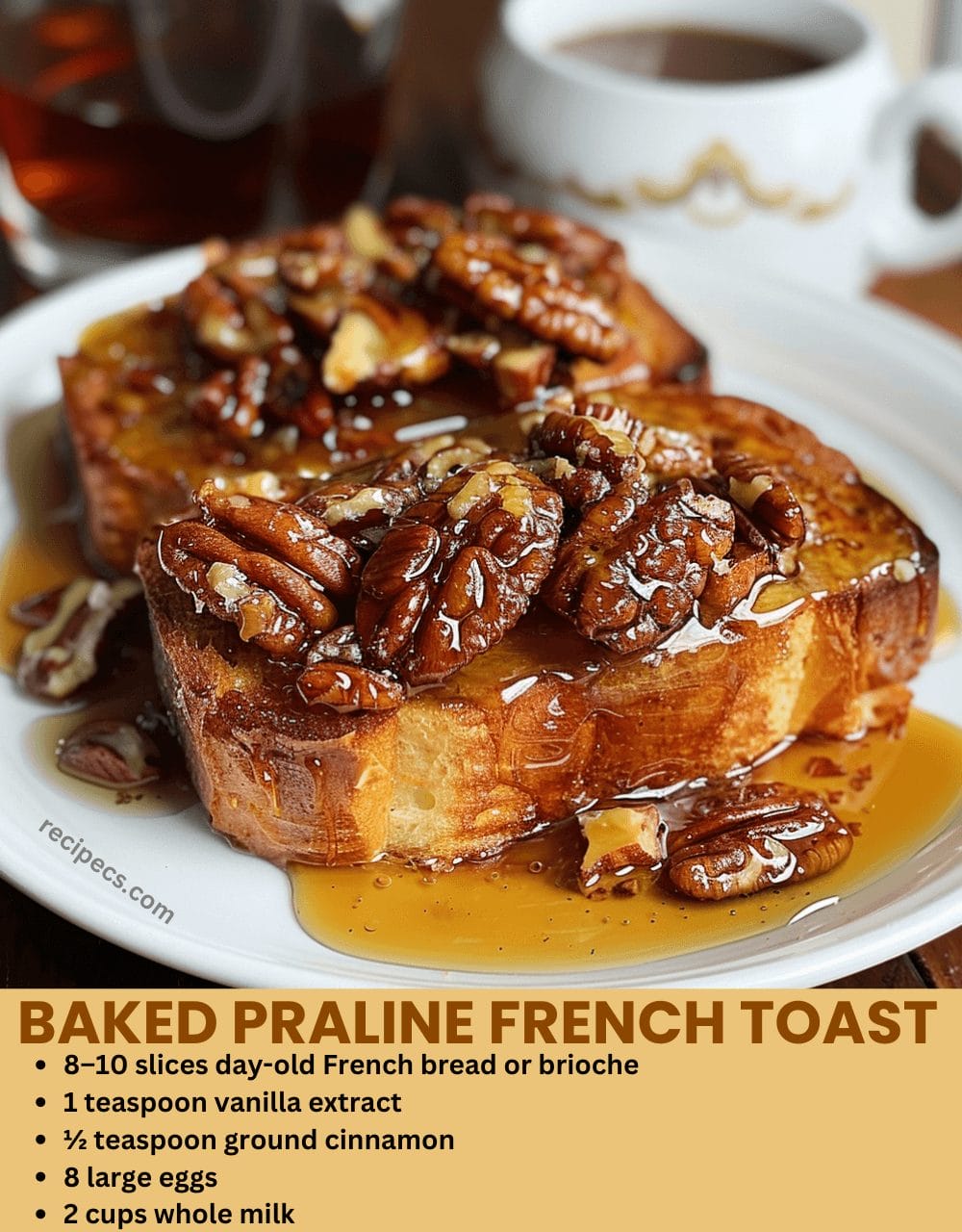Would you like to save this?
Ingredients:
1 (24-oz) 2-inch-thick rib-eye steak, at room temperature
Kosher salt and freshly ground black pepper to taste
1 tbsp canola oil
3 tbsp unsalted butter
3 garlic cloves, crushed
3 sprigs fresh thyme
2 sprigs fresh rosemary
Directions:
Preparation:
Pat the steak dry with paper towels.
Rub the steak with 1/2 teaspoon of pepper and 1 1/4 teaspoons of salt.
Cooking:
Heat a cast-iron pan over medium-high heat.
Add oil and heat until it shimmers.
Place the steak in the pan and cook each side for about 3 minutes or until dark brown.
Flavor Infusion:
Lower the heat to medium-low.
Move the steak to one side of the pan and add butter, thyme, rosemary, and garlic.
Let the butter melt and then spoon it over the steak, cooking for another 2 minutes.
Resting:
Remove the steak from the pan and transfer it to a cutting board.
Allow the steak to rest for at least 16 minutes.
Serving:
Slice into bite-size pieces and serve.
Introduction to Ribeye Steak and Its Variations
Ribeye steak is revered for its rich marbling, which imparts a luxurious flavor and tenderness. Originating from the rib section, this cut of beef is ideal for high-heat, quick cooking methods like grilling or pan-searing. The recipe provided above showcases a classic approach, emphasizing simplicity and the natural taste of the steak. However, the beauty of cooking lies in its versatility, and there are numerous ways to tweak this recipe to suit different preferences.
Variations and Substitutions
1. Marinades and Rubs:Marinades:
To infuse additional flavors, marinate the steak in a mixture of olive oil, balsamic vinegar, soy sauce, and garlic for at least an hour before cooking.
Rubs: Create a dry rub with smoked paprika, garlic powder, onion powder, and brown sugar for a sweet and smoky flavor profile.
2. Cooking Methods:
Grilling: For a charred, smoky taste, grill the ribeye over medium-high heat for 4-5 minutes per side.
Sous Vide: Cook the steak sous vide at 130°F (54°C) for 2 hours, then sear in a hot pan for a minute on each side to develop a crust.
3. Herb and Spice Variations:
Herbs: Swap rosemary and thyme with tarragon and oregano for a different herbal note.
Spices: Add a pinch of cayenne pepper or smoked paprika to the seasoning for a hint of heat.
4. Butter Alternatives:
Herb Butter: Blend softened butter with chopped parsley, chives, and lemon zest to create a compound butter to finish the steak.
Ghee: Use ghee instead of butter for a nutty, clarified butter flavor that withstands higher cooking temperatures.
5. Garlic Preparations:
Roasted Garlic: Substitute fresh garlic with roasted garlic for a milder, sweeter garlic flavor.
Garlic Powder: Use garlic powder in the rub if fresh garlic is not preferred.
Dietary Substitutions
1. Vegan and Vegetarian Options:Portobello Mushrooms:
Use large portobello mushroom caps as a meat substitute. Marinate and cook them similarly to the steak for a hearty, umami-rich dish.
Cauliflower Steaks: Slice a cauliflower head into thick “steaks,” season, and roast or grill them for a satisfying alternative.
2. Low-Sodium Diet:
Salt Substitutes: Use potassium chloride-based salt substitutes or reduce the salt and enhance flavor with additional herbs and spices.
Unsalted Butter: Ensure the butter used is unsalted to control sodium levels.
3. Dairy-Free:
Oil: Replace butter with extra virgin olive oil or avocado oil for a dairy-free version.
Vegan Butter: Use plant-based butter alternatives available in the market.
Enhancing the Dish
1. Sauce Pairings:Béarnaise Sauce:
A classic French sauce made with egg yolks, butter, and tarragon vinegar that pairs beautifully with ribeye steak.
Chimichurri: An Argentine sauce made from parsley, garlic, vinegar, olive oil, and red pepper flakes that adds a fresh, tangy flavor.
2. Side Dishes:
Mashed Potatoes: Creamy mashed potatoes with roasted garlic and chives.
Grilled Vegetables: A medley of grilled asparagus, bell peppers, and zucchini seasoned with olive oil, salt, and pepper.
3. Wine Pairings:
Red Wines: Full-bodied red wines like Cabernet Sauvignon, Malbec, or Merlot complement the richness of ribeye steak.
Alternative Pairings: For a lighter option, consider a bold Zinfandel or a peppery Syrah.
Final Thoughts
Cooking ribeye steak to perfection involves a balance of high-quality ingredients, precise timing, and personal taste preferences. This recipe provides a foundational approach, but the potential variations and substitutions are vast. Whether you stick to the classic method or experiment with new flavors and techniques, the key is to enjoy the process and savor the delicious results.
From marinating and seasoning to exploring different cooking methods and dietary alternatives, ribeye steak can be tailored to fit any culinary style or preference. As you hone your steak-cooking skills, remember that the journey is just as rewarding as the destination—a beautifully cooked ribeye steak.
Conclusion
Ribeye steak is more than just a meal; it’s an experience. The recipe and variations provided here offer a comprehensive guide to mastering this dish, ensuring that whether you’re a novice cook or a seasoned chef, you can achieve a mouthwatering steak every time. Experiment with different flavors, techniques, and accompaniments to create your signature ribeye steak that will impress and satisfy every palate.

